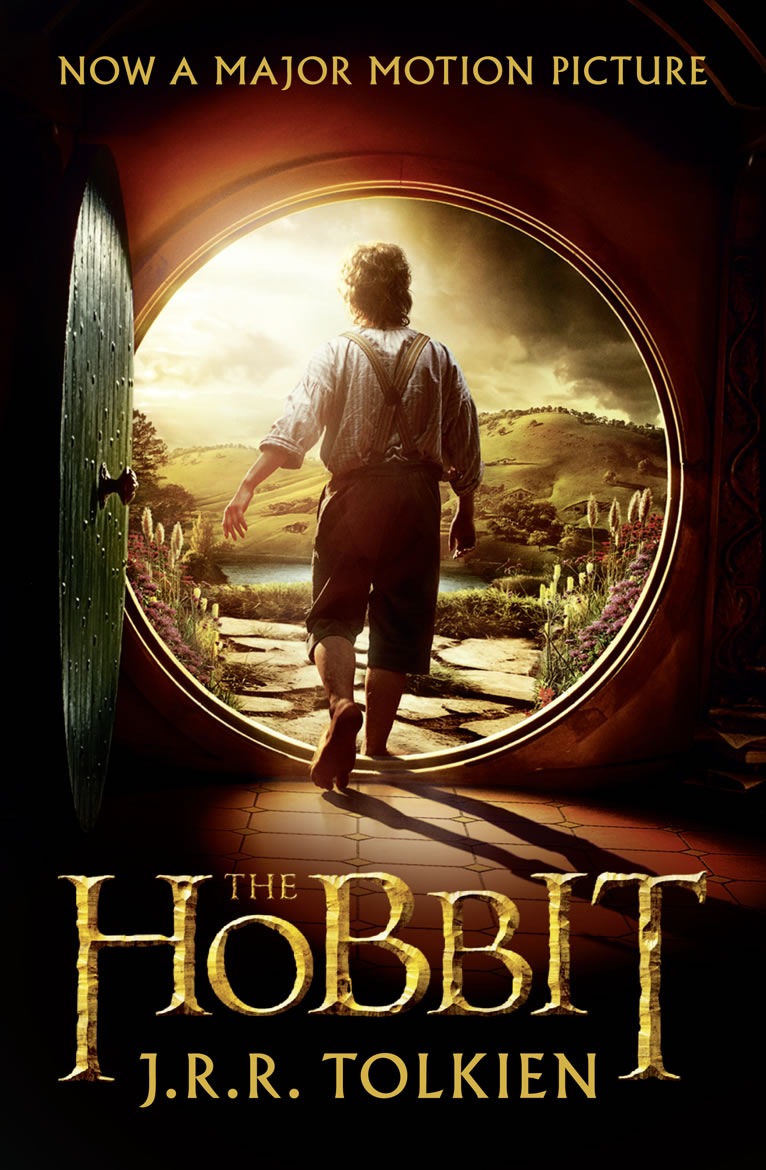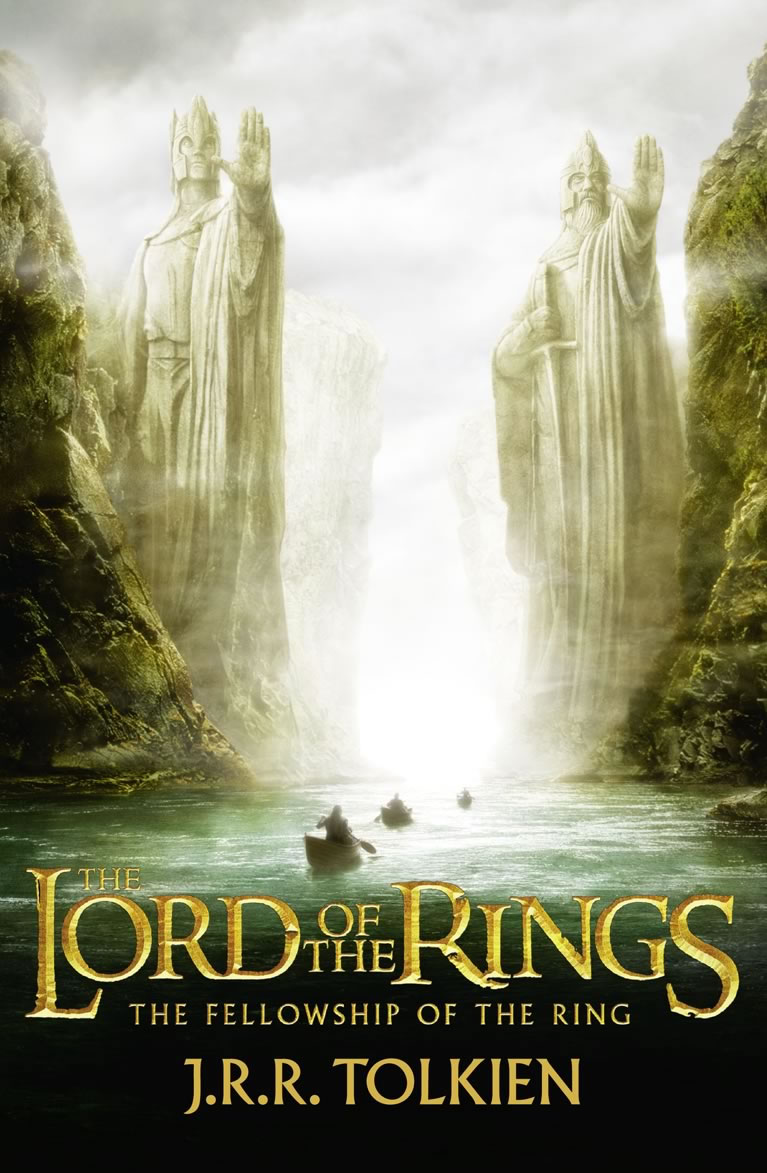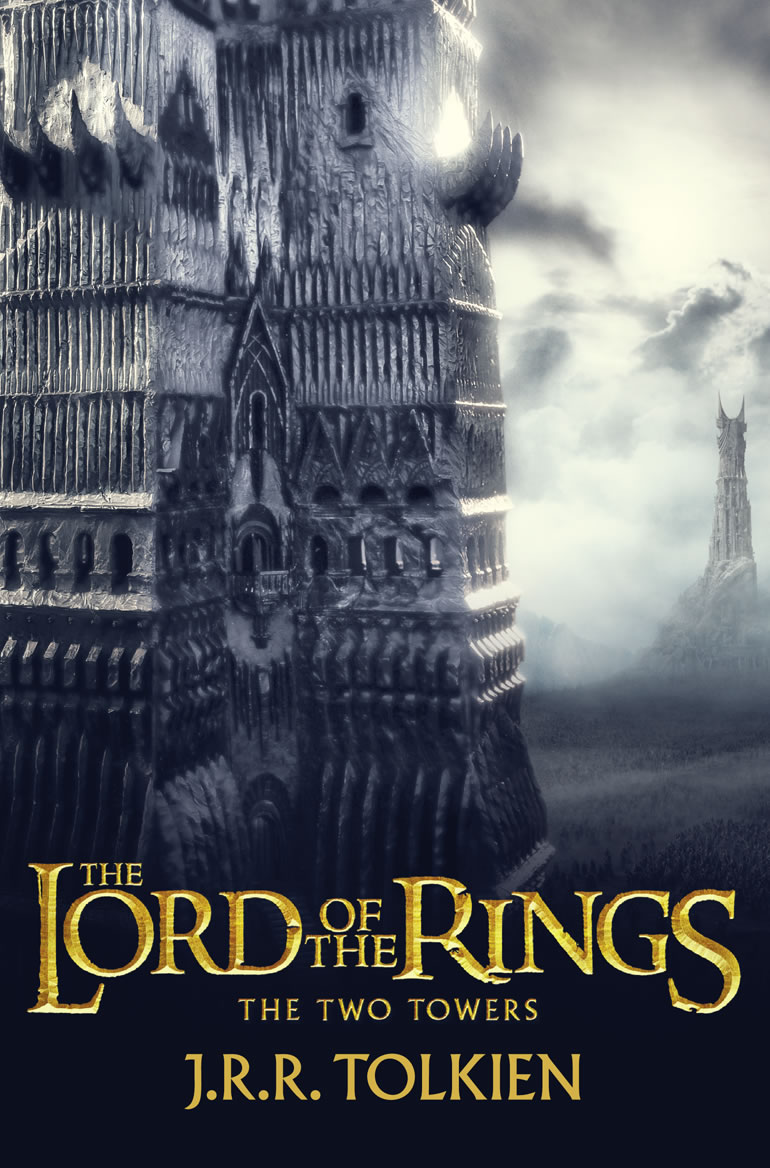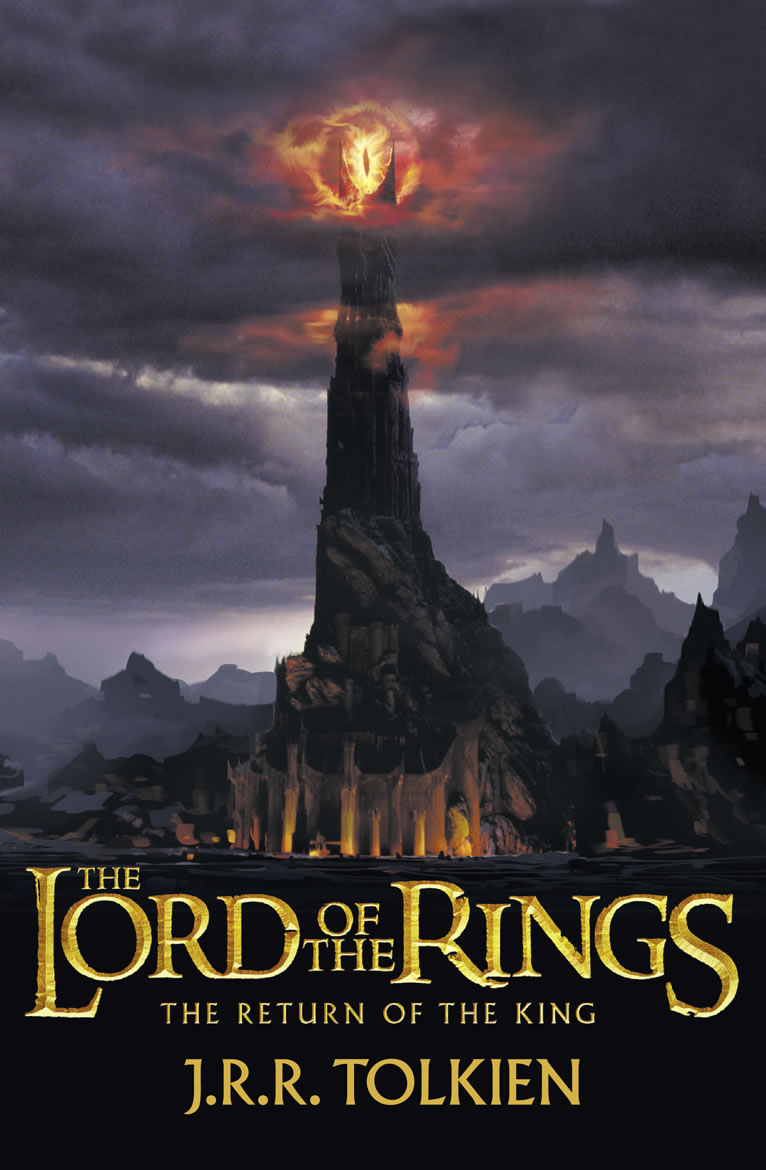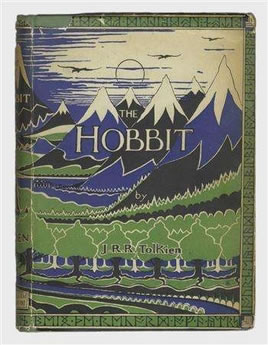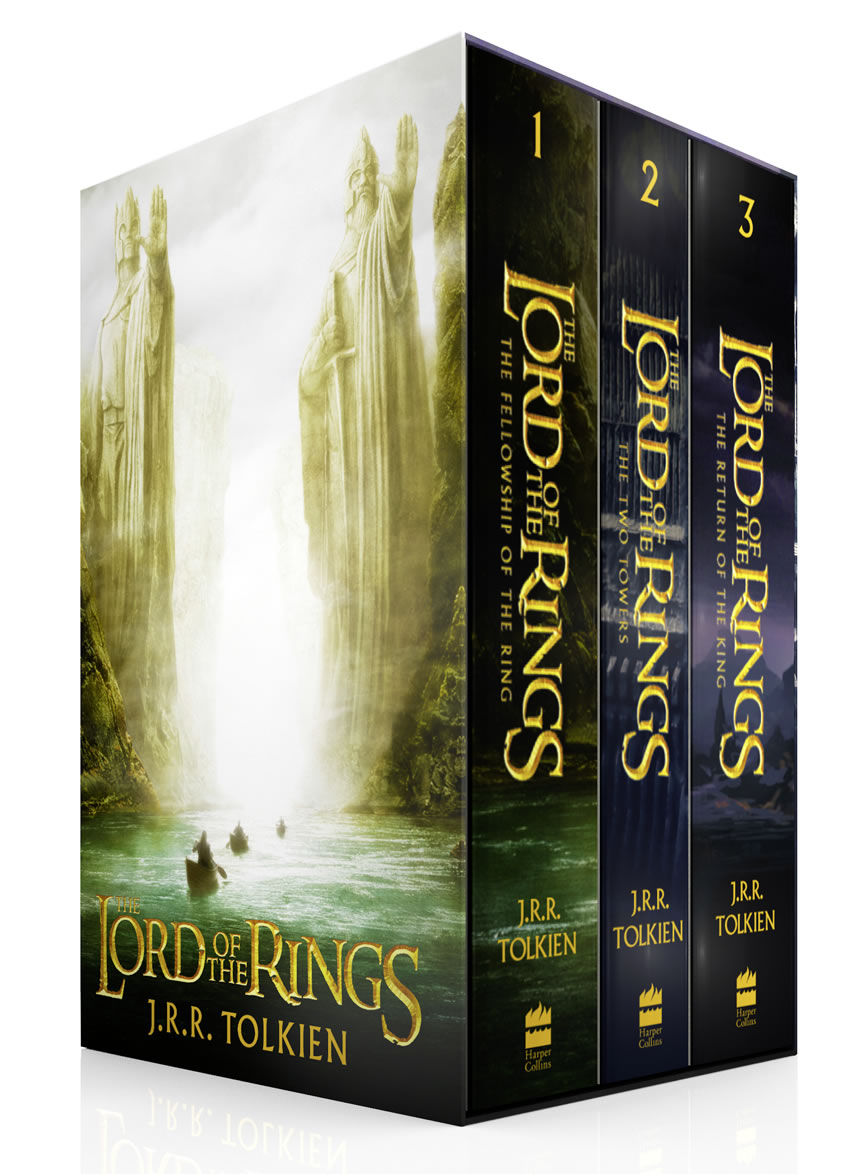HarperCollins Releases Hobbit Movie Cover Edition (30.05.12 by Imogen Reed) -
Comments
The new cover is set within Bag End, from the viewpoint of the Fellowship where Gandalf bangs his head on the chandelier. Instead of seeing Ian McKellen, we see the back of Martin Freeman as the young Bilbo Baggins looking out over the Shire. There is bright sunshine to the left and a dark smoke-like cloud to the right.
HarperCollins have also re-released the Lord of the Rings with movie tie-in covers from their movie adaptation. The difference from a decade ago is that these are new images. One scene from each film for each book. For The Fellowship of the Ring we got the fellowship paddling down the Anduin towards the Argonath. The Return of The King shows the tower of Barad-Dur with Sauron's fiery eye.
The new Two Towers cover is the most contentious. We are treated to a picture involving Isengard in the foreground and Barad-Dur in the background. Let's ignore the fact that the two towers are not that close and one cannot be seen from the other without the aid of a palantir. Tolkien never stated which two towers he was referring to by this title. It could be Isengard and Barad-Dur or it could be Cirith Ungol where Frodo faces off with Shelob. It could be Minas Morgul and Minas Tirith.
This is where we see how important cover images are. They inform the reader about certain elements of the story. If a character is portrayed on the cover, then when someone reads the book they automatically imagine that image as representing the character in the narrative. This is doubly dangerous is the two do not match. In short, in the reader's imagination it ensures the movie's vision of the story invades the reader's imagination.
The economic argument is sound from the point of view of both the studio and the publisher. Products with scenes and characters from the Hobbit on it will sell. People will want to collect mugs, action figures, toys, games, playing cards and yes, even the books. Moreover, as Morgan Spurlock's documentary, The Greatest Movie Ever Sold points out, any movie that can create tie ins and merchandise will do so. There is a symbiotic relationship between studios and their sponsor companies. Sponsor companies will not simply action the financial transferal of credit to the studio without getting something in return. Their products cannot appear in the film. Bilbo will not be filmed wearing Nike shoes (hobbits don't wear shoes for one), so they can get money by paying for the right to have tie in products. This includes HarperCollins who are likely to be the biggest beneficiaries of the merchandise rush.
Money and merchandising, however, are contrary to Tolkien's own opinions on how life should be led. In many ways the Shire is his utopia. It is a simple place based on the Cotswolds west of his Oxford home. A place of rolling hills, small woods and cottages made of golden stone. It is a relaxed, peaceful place where hobbits enjoy good food, ale, dances, singsongs and smoking pipes. His primary concern was the encroachment of the industrial revolution. During his childhood he saw the urban creep of Birmingham as it gobbled field after field. He did not live long enough to see the second creeping effect on society, that of advertising, merchandising and money. It is wrong to put words in his mouth, but it's a good bet to believe he would not have been happy by this.
We should think towards at least one positive from this. The movie will draw in a fresh generation of potential Tolkien fans who will hopefully go out and buy the book - hopefully because of the content and not just the nice cover - and will progress to Tolkien's other masterpieces from the Lord of the Rings to the Silmarillion and The Lost Tales. Other movies may be made and other covers changed, new artists will make new covers to replace these tacky movie tie ins, but the books, the stories will always live on.
Publisher: HarperCollins
Publication Date: August 30, 2012
Type: paperback, 400 pages
ISBN-10: 0007487282
ISBN-13: 978-0007487288
Publisher: HarperCollins
Publication Date: August 30, 2012
Type: paperback, 448 / 352 / 642 pages
ISBN-10: 0007488319 / 0007488335 / 0007488343
ISBN-13: 978-0007488315 / 978-0007488339 / 978-0007488346
Spread the news about this J.R.R. Tolkien article:
